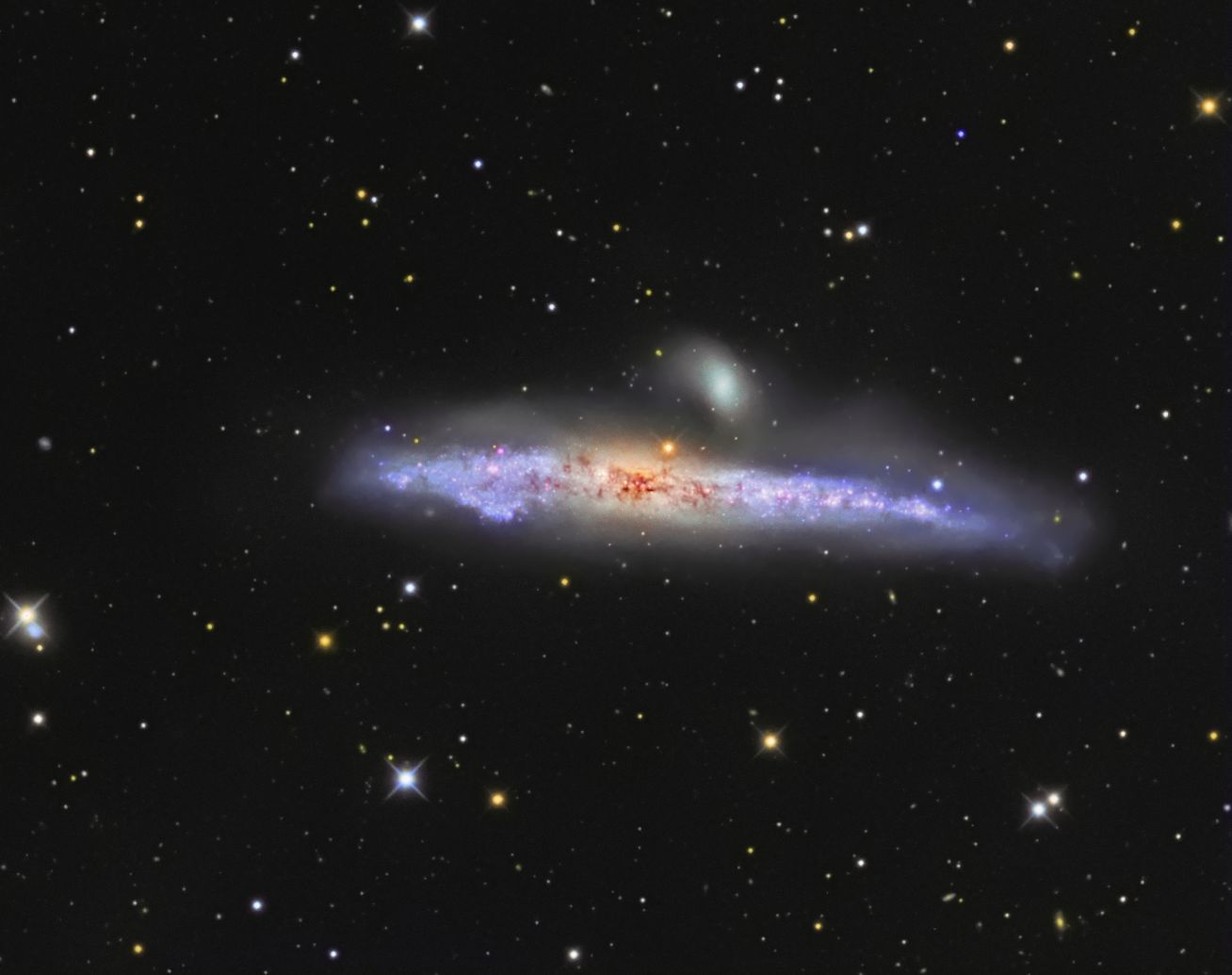Samuel Diaz Lopez, Colin McGill and yours truly have worked on another fascinating galaxy.
This time, however, due to technical problems now solved, I haven’t been able to provide any actual data, but the image shown in this post was processed by me.
It was acquired with:
- Telescopes: Ian King Ikharos RC8, GSO RC10
- CCD cameras: Atik 4000, Atik 460ex
- Mounts: Astro-Physics AP900, Paramount MX
NGC 4631 (also known as the Whale Galaxy or Caldwell 32) is an edge-on spiral galaxy in the constellation Canes Venatici. This galaxy’s slightly distorted wedge shape gives it the appearance of a herring or a whale, hence its nickname. Because this nearby galaxy is seen edge-on from Earth, professional astronomers observe this galaxy to better understand the gas and stars located outside the plane of the galaxy.
NGC 4631 contains a central starburst, which is a region of intense star formation. The strong star formation is evident in the emission from ionized hydrogen[4] and interstellar dust heated by the stars formed in the starburst.[5] The most massive stars that form in star formation regions only burn hydrogen gas through fusion for a short period of time, after which they explode as supernovae. So many supernovae have exploded in the center of NGC 4631 that they are blowing gas out of the plane of the galaxy. Wikipedia
The acquisition consisted of a grand total of 19 hours, divided like follows:
- Luminance: 31x900” (Samuel)
- Hα: 5x1800” (Samuel)
- RGB: 35x300” per channel (Colin)
I’m quite satisfied about the processing, which was made entirely in PixInsight
1.7. For starters, the deconvolution was very successful, and it allowed the
revealing of many details in the core. Then, I was able to successfully use the
MultiscaleMedianTransform process for noise reduction, and that’s a really
powerful tool, if you know how to use it.
I’m also very satisfied with the amount of faint dust all around the galaxy: that’s not something you see in every image of this object.
It was also my first time combining LRGB and Hα data, and that turned out fine.
Now on to the next target!

